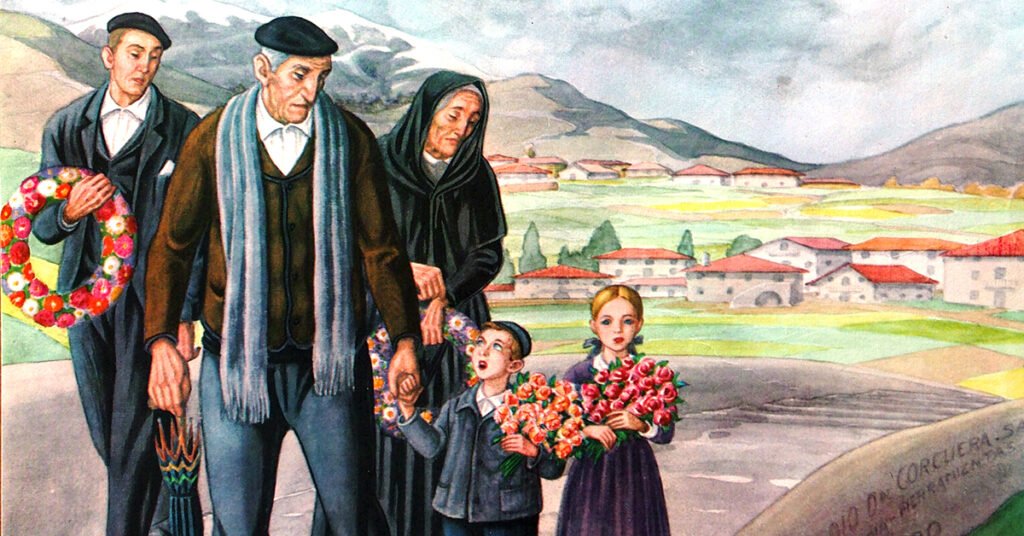Basque ethnography at a glance
All Souls Day was t the main date to honour the departed in Basque traditions until half a century ago and was celebrated on 2 November. Conversely, its eve, All Saints Day on 1 November, was a time of religious services and little else.
Incidentally, the night of the souls – much vaunted to “disguise” the imported Halloween – is in reality the night between 1 and 2 November and not the previous one.
Yet… Where did all this confusion come from?
In the 8th century, the Church established the feast day of “All Saints” in order for the faithful to have exemplary models for their lives. “All the male and female saints”, without any being excluded. That would provide a strong moral compass for the common folk. Furthermore, the Church was likely able to thus embrace earlier popular beliefs to do with nature becoming dormant.
Against this backdrop, in the 9th century the Pope ordered that All Saints Day be celebrated throughout the Christian world.
However, despite the success achieved, more ordinary folk were not satisfied with honouring the untainted saints, as those models were too remote. On the contrary, they were much more concerned about the fate of “their departed”: that of their father, sister, maid or that good friend who had died.
They wanted to remember, honour and help the souls of their loved ones, even though their lives had often been far from perfect.
The Church was therefore forced to establish a second festivity to worship the “near and dear” ancestors – All Souls Day or of the Faithful Departed – on the following day, 2 November.
In turn, they instilled the belief that the souls of people who had died without being cleansed of their sins could not attain eternal life and would roam the intermediate state of Purgatory. However, they also came up with an ingenious solution: the faithful on earth could help their departed to attain eternal life by means of prayers, masses and, ultimately, by paying.
St. Odilo of Cluny had started to preach the idea of the errant souls to be helped at around the turn of the millennium. His idea was subsequently adopted by Rome and it was spread throughout Christendom by the Council of Trent in the 16th century.
Consequently, the belief proliferated among the lower classes that the departed returned to the houses where they had previously lived and took part in the meals of the living on the Night of the Dead.
That led to the Basque rituals on All Souls Days that survived until relatively recently; it was usual not only to light candles on the graves in the churches, but also in the windows of the homes so that the ancestors of that family could find their way home. Crosses were also erected at crossroads to help the lost souls find their way at those forks in the route. Or the custom of laying a place at the table so that the deceased who lived in that parallel world could symbolically be at the table.
However, times changed and modernity led to a shift in the Church. Its innovative Vatican Council II (1963-65) thus removed the Day of the Dead or All Souls Day. The double festivity was considered excessive as it was deemed that its objectives had already been achieved. Thus, both dates were merged again into 1 November, All Saints Day, and we have ever since honoured those saints that may seem remote and the dearly departed closer to us – regardless of their sins – on the same date.
Felix Mugurutza



